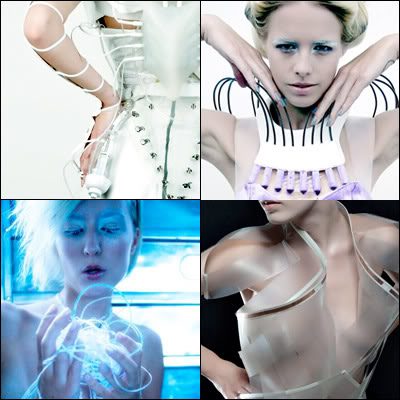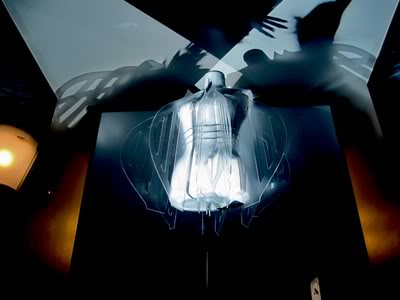b
Anouk Wipprecht: The Merging of Technology and Fashion
Anouk Wipprecht is a Dutch fashion designer who works in the emerging field of “fashionable technology,” defined by Sabine Seymour as “the intersection of fashion, design, science, and technology.” Anouk seeks to create a “higher state of connectivity between the body and our clothing,” a physical and psychological relationship wherein what we wear responds to us, and we are also affected by what we wear, producing something more than just the traditional function of coverture/adornment. What results is one-of-a-kind, architectural, avant-garde garments with bold silhouettes, vested with circuitry and a regalia of plastic tubes and the ability to respond in a unique and remarkable way to human bodies.


The Birds, an installation piece inspired by the Hitchcock film
Examples of Anouk Wipprecht’s “wearable tech” include Fragilis, a dress that eerily mimics the function of the human heart and veins through motion and lighting (similar to the Heartbeat Dress, which conversely uses sound, recording the heartbeat of the model and relaying it to the audience through speakers embedded in the dress), and Intimacy, a set of garments that become more or less transparent and opaque in relation to their proximity to each other.